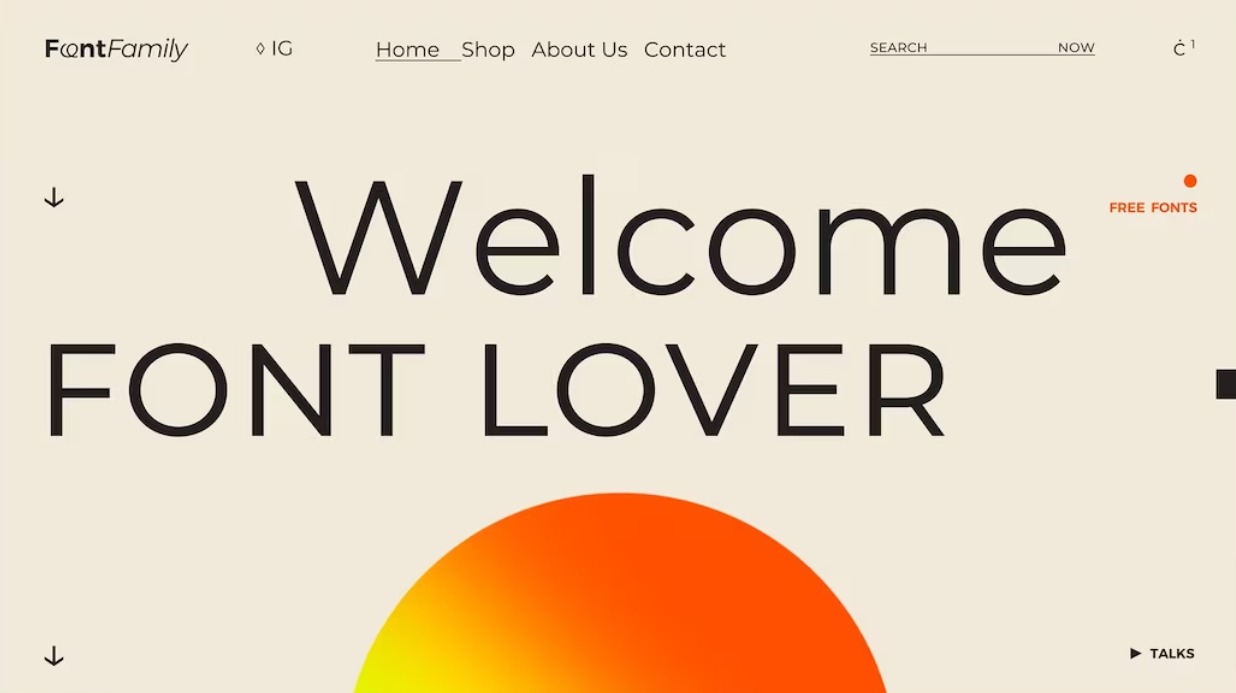
Revolutionizing Typography with Variable Fonts: A Comprehensive Guide
- Post
- August 8, 2023
- Graphic Design, Typography, Web Design
- 0 Comments
Typography is the art and technique of arranging type to make written language legible, readable, and visually appealing. It has long played a pivotal role in design, communication, and branding. In recent years, the introduction of variable fonts has marked a significant shift in the world of typography, offering designers and developers unparalleled control and creative possibilities. In this comprehensive guide, we delve into the realm of variable fonts, exploring their impact on typography design and providing insights into how you can harness their potential.
Understanding Variable Fonts: Defining the Future of Typography
Variable fonts are an innovative typographic technology that allows a single font file to contain multiple variations within a specified range. These variations encompass attributes such as weight, width, slant, and even optical size. This means that a single font can smoothly transition between different styles, eliminating the need for multiple font files. The adaptability and scalability of variable fonts open doors to exceptional design possibilities and improved web performance.
The Advantages of Variable Fonts in Typography Design
Enhanced Design Flexibility:
Variable fonts empower designers to exercise greater creativity by offering a broader spectrum of design possibilities within a single font family. This flexibility encourages experimentation and the creation of unique typographic aesthetics.
Improved Web Performance:
The compact nature of variable font files contributes to faster loading times, benefiting both user experience and search engine optimization (SEO). This aligns with Google’s Core Web Vitals and can positively impact search rankings.
Responsive Typography:
Variable fonts seamlessly adapt to various screen sizes and resolutions, ensuring optimal readability across devices. This responsiveness is a game-changer for responsive web design.
Reduced Bandwidth Consumption:
Since a single file encompasses multiple styles, variable fonts significantly reduce bandwidth consumption compared to traditional font files, resulting in faster website loading times.
Implementing Variable Fonts: Best Practices
When integrating variable fonts into your design projects, follow these best practices to maximize their potential:
Selecting the Right Variable Font:
Choose a variable font that aligns with your design vision and the message you want to convey. Ensure that the variations offered by the font match your intended design direction.
Optimizing for Readability:
While the versatility of variable fonts allows for experimentation, prioritize readability. Test different variations to ensure that the font remains legible across various styles.
Utilizing Variable Font Axes:
Variable fonts offer multiple axes of variation. Experiment with weight, width, slant, and more to create dynamic and engaging typography that enhances the overall design.
Variable Fonts and SEO: A Harmonious Alliance
In the realm of SEO, typography might not be the first thing that comes to mind, but its impact is undeniable:
Better User Experience:
Typography influences user experience, readability, and engagement. A well-implemented variable font can enhance these factors, contributing to longer dwell times and potentially lower bounce rates.
Mobile-Friendly Design:
Variable fonts play a crucial role in maintaining a seamless reading experience on mobile devices, aligning with Google’s mobile-first indexing approach.
Page Loading Speed:
As mentioned earlier, variable fonts’ compact file size aids in faster page loading. This directly correlates with improved SEO rankings.
Commonly Asked Questions About Variable Fonts
Q1: Can variable fonts be used on any website?
Yes, variable fonts can be used on any website that supports modern web technologies, including CSS3. However, it’s essential to ensure browser compatibility.
Q2: Are variable fonts accessible to all users?
Absolutely. Variable fonts can enhance accessibility by offering options for increased legibility and optimized reading experiences for users with visual impairments.
Q3: Do variable fonts replace traditional fonts?
Variable fonts do not entirely replace traditional fonts. They provide an additional tool in a designer’s toolkit, offering more design flexibility.
Q4: How do variable fonts impact website performance?
Variable fonts typically have a positive impact on website performance due to their smaller file size, contributing to faster loading times.
Q5: Can variable fonts be used in print design?
Yes, variable fonts can be used in print design as well, offering the same benefits of adaptability and creative freedom.
Final Words
Variable fonts have revolutionized typography design, ushering in a new era of creative possibilities and improved web performance. By harnessing the adaptability and scalability of variable fonts, designers and developers can create visually stunning and highly readable typography that enhances user experience and aligns with SEO best practices. As the digital landscape continues to evolve, variable fonts stand as a testament to the power of innovation in the world of design and technology.




